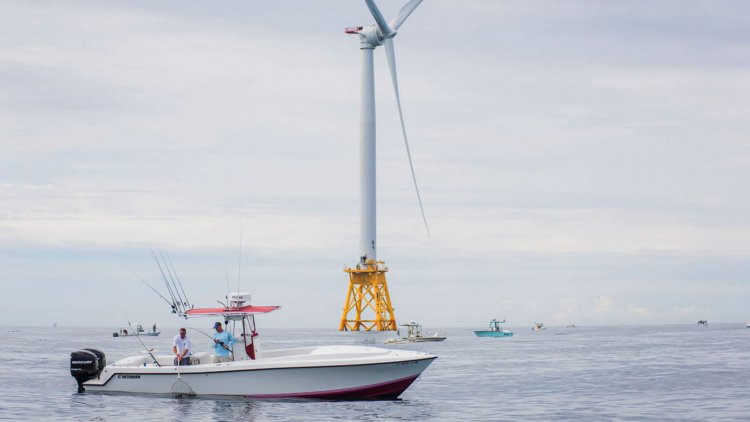NABTU and Ørsted sign MOU for U.S. offshore wind workforce transition
Pioneering Partnership to Develop the Next Generation of Offshore Wind Workers

Ørsted, the global leader in offshore wind development, announced today a landmark initiative with North America’s Building Trades Unions (NABTU), the labor organization representing more than 3 million skilled craft professionals. The partnership will create a national agreement designed to transition U.S. union construction workers into the offshore wind industry in collaboration with the leadership of the 14 U.S. NABTU affiliates and the AFL-CIO.
Ørsted’s agreement with NABTU represents a transformative moment for organized labor and the clean energy industry. This framework sets a model for labor-management cooperation and workforce development in the budding offshore wind industry. There are currently 15 active commercial leases for offshore wind development in the U.S. According to a report released by the American Wind Energy Association, if fully built, these leases would support up to 30 GW of offshore wind capacity – representing an estimated 83,000 jobs and $25 billion in annual economic output within the next decade.
Sean McGarvey, President of NABTU, said:
“Today’s agreement expands career pathways of opportunities for our members to flourish in this transition. Our highly trained men and women professionals have the best craft skills in the world, and now will gain new experience in deep-water ocean work. Our agreement is based on a successful model developed by the Rhode Island Building Trades for the Block Island Wind Farm project. We commend Ørsted for coming to the table to work in partnership with us and our membership, and we also thank AFL-CIO Secretary-Treasurer Liz Shuler for her help and support throughout the process.”
Ørsted has the largest footprint of any offshore wind developer operating in U.S. waters, having been awarded 2.9GW of power contracts up and down the Eastern seaboard from Rhode Island to Maryland. This announcement underscores the company’s desire to solidify offshore wind’s position as an incubator for union green-collar job creation and innovation.
David Hardy, CEO of Ørsted Offshore North America, said:
“Ørsted believes the best workers are always the best-trained workers, and we are proud to have earned a strong record of working with skilled union labor to build the country’s first offshore wind farm, the Block Island Wind Farm, where more than 300 union workers were employed. We appreciate NABTU’s cooperation and the collaborative approach our union partners have brought to this endeavor and look forward to learning from and working with them on this groundbreaking partnership.”
As part of this national framework, Ørsted, along with their partners, will work together with the building trades’ unions to identify the skills necessary to accelerate an offshore wind construction workforce. The groups will match those needs against the available workforce, timelines, scopes of work, and certification requirements to fulfill Ørsted’s pipeline of projects down the East Coast, creating expansive job opportunities in a brand-new American industry for years to come and raising economics for a just transition in the renewable sector.
Ørsted and NABTU, along with their affiliates and state and local councils, have agreed to work together on long-term strategic plans for the balanced and sustainable development of Ørsted’s offshore wind projects. This planning effort will help ensure that site and state specific programming will be ready when federal permits are obtained, and construction begins.
These are the green jobs of the future, and this framework demonstrates that just transition can be accomplished through prioritization of workforce training and middle-class labor standards with family-sustaining wages, healthcare benefits, and pension security. Ørsted remains fully committed to coordinating with local unions and NABTU councils to create a consistent workforce pipeline and cohesive network to lead an effective just transition into the vast and complex nature of offshore wind development in the United States.



























